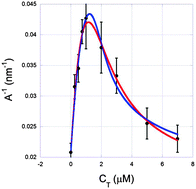Extracting physical chemistry from mechanics: a new approach to investigate DNA interactions with drugs and proteins in single molecule experiments
Abstract
In this review we focus on the idea of establishing connections between the mechanical properties of DNA–ligand complexes and the physical chemistry of DNA–ligand interactions. This type of connection is interesting because it opens the possibility of performing a robust characterization of such interactions by using only one experimental technique: single molecule stretching. Furthermore, it also opens new possibilities in comparing results obtained by very different approaches, in particular when comparing single molecule techniques to ensemble-averaging techniques. We start the manuscript reviewing important concepts of DNA mechanics, from the basic mechanical properties to the Worm-Like Chain model. Next we review the basic concepts of the physical chemistry of DNA–ligand interactions, revisiting the most important models used to analyze the binding data and discussing their binding isotherms. Then, we discuss the basic features of the single molecule techniques most used to stretch DNA–ligand complexes and to obtain “force × extension” data, from which the mechanical properties of the complexes can be determined. We also discuss the characteristics of the main types of interactions that can occur between DNA and ligands, from covalent binding to simple electrostatic driven interactions. Finally, we present a historical survey of the attempts to connect mechanics to physical chemistry for DNA–ligand systems, emphasizing a recently developed fitting approach useful to connect the persistence length of DNA–ligand complexes to the physicochemical properties of the interaction. Such an approach in principle can be used for any type of ligand, from drugs to proteins, even if multiple binding modes are present.


 Please wait while we load your content...
Please wait while we load your content...